(first posted 10/19/2012) Chrysler was really on a roll during its modern golden era in the ’90s. There were the LH cars, the 1994 Ram, the Viper and a new generation of minivans–and, of course, the Neon. I thought these cute little subcompacts were really cool when they came out. They seemed so modern compared with the outgoing Sundance/Shadow twins, with their late ’80s looks and K-car derived underpinnings. The Neon had the right look and the right price, and seemed primed for success. Take the Sport Coupe, for instance. What could be better than an affordable, sprightly little autocrosser? Well, there were some snags along the way…
The Neon was a big deal for Chrysler. Riding the cresting wave of the 1993 LH full-size, cab-forward sedans, the Neon was supposed to be a breakthrough in terms of space, efficiency, and fun, and would finally give the Honda Civic some real American competition. Introduced by the now-famous “Hi” ad campaign and billboards in January 1994, as a very early 1995 model, the Neon, which was sold in identical Dodge and Plymouth versions, was a revelation. And what a revelation: it offered a low price, lots of space and, a bit later, a revvy little Sport Coupe model. And was this really an American car? Why, it looked like a Citroen or Peugeot, for crying out loud! The Neon was America’s last great hope to hold back the Japanese invasion, and Japanese execs were truly worried about it–at least before Neon head gaskets started popping like Fourth of July fireworks.
As the 1995 Dodge brochure put it, “Neon’s naturally rounded organic contours not only cheat the wind, but they’ll put a smile on your face every time you look at Neon’s face.” All in all, the Neon appeared to be an attractive, wholesome and modern little domestic. It even had dual airbags–something quite rare in this segment at the time.
Available in cheapskate-friendly, black-bumpered Base and slightly flossier Highline models (the latter is shown above), the four-door Neon seemed the right car at the right time. Both trim levels came with a 2.0-liter, SOHC 16-valve inline four with 132 hp and 129 lb-ft of torque–best-in-class at the time. But there was more to come…
Shortly after their introduction, the Neon sedans were joined by the Sport Coupe. The Sport Coupe wasn’t merely a two-door version of the sedans; it actually delivered some extra scoot, with a DOHC version of the 2.0-liter that made 150 horsepower and 133 lb-ft of torque–not too shabby for the featherweight (2,384 lb.) coupe.
 image: weekendhorsepower.com
image: weekendhorsepower.com
There was even a special race-prepped ACR Sport Coupe available for those who enjoyed autocross or gymkhana events. Available with either the SOHC or DOHC engine, these unique Neons also got four-wheel disc brakes, Arvin non-adjustable struts, heavier anti-sway bars, a five-speed manual (with a numerically higher fifth gear) and a higher final drive ratio, along with some other goodies. Laugh all you want at that rusted-out Neon next to you at a red light, but when properly equipped, a Sport Coupe or ACR Sport Coupe could run with–and even surpass–much pricier iron on a road course. They are much-loved track cars to this day.
While there was a lot of good in the original Neon, it was not without its faults. One of the biggest headaches involved inferior head gaskets that liked to fail at about 60,000 miles. Today, the fix is relatively cheap, which really isn’t of much consolation to the folks that bought them new. In no aspect was the Neon remotely a paragon of quality fit and finish, especially in the heyday of the “fat” period when Toyota and most other Japanese car makers were pushing the quality envelope like never before (or again). Say “Bye!”
Another interesting thing about these Neons were how distinctive they actually were. I clearly remember the Neon’s introduction, and seeing new ones at Key Dodge, in Moline, where my Mom got her Grand Caravans. I thought they were really cool, and I pestered my folks to snag me a deluxe Neon brochure when they took the ES in for service. I still have those brochures today! I also thought it was cool that they were built about three hours away, in Belvidere, IL.
I also clearly remember the “confetti” multi-color upholstery inside these cars, which added a bit of brightness to an otherwise dark interior. It was a cool touch, and quite in keeping with the go-go Chrysler Corporation of the 1990s. Of course, being in the eighth grade at the time, I knew nothing of the Neon’s reliability troubles. Chrysler seemed primed for decades of success during the 1992-95 period. How could they have fallen so far, so fast? Oh, that’s right: Daimler. But I digress…
Another way the Neon distinguished itself from other cheap wheels was its far-out color choices. Consider our featured car’s Nitro Yellow-Green paint. I clearly remember seeing this color car pictured in the brochure, and eagerly anticipated seeing some on the road. I waited, and waited…where were they? Well, the bright green, Strawberry Pearl and Magenta colors, while certainly adventurous, were not too popular, much like the High Impact colors on Mopar Muscle machines of the early ’70s. Today, of course, everyone wants one painted one of those colors. This Nitro Yellow Green coupe is the first one I’ve seen in years.
You may remember my first sighting of this particular Neon despite a lack of photographic evidence. Suffice it to say that I was fortunate to run across it again a few weeks ago, and in the very same spot. Yes, it’s a bit weathered and rusty, but it still caught my eye. I still really do like these Neons, though there are few first-generation examples running around the Quad Cities these days.
Sadly, the coupe was nowhere to be found among the reworked Neon lineup for 2000. The Plymouth version went away after the 2001 model year (in fact, the Neon was the only 2001 Plymouth); Dodge’s version, which lasted through 2005, was replaced by the dubious, wish-I-was-an-SUV Caliber. The Neon had essentially zero long-term impact on the Japanese, much to the relief of many Toyota and Honda execs. Hopefully, though, the new 2013 Dart will recapture a bit of that Neon ACR magic. Time will tell.
ED: The vintage Neon commercials are from–you guessed it–Youtube.











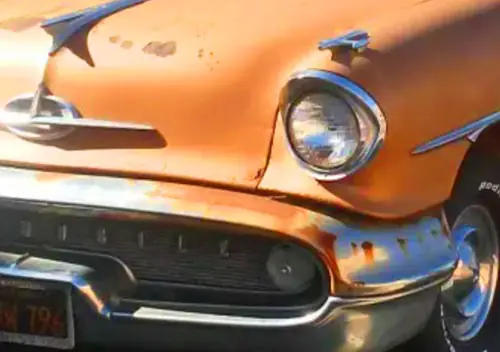
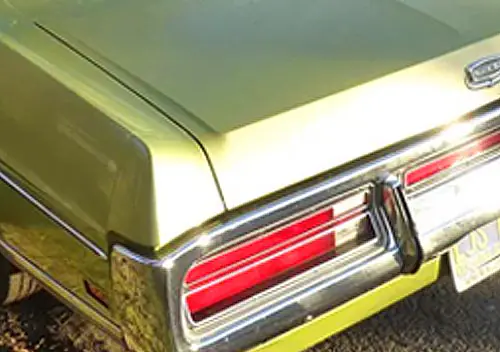
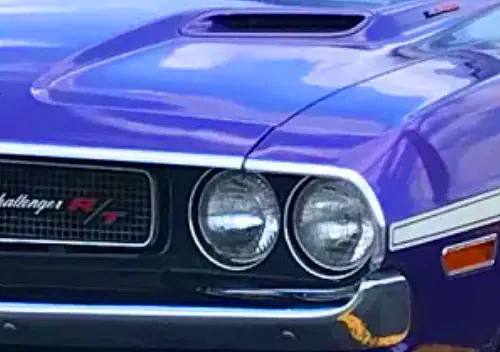

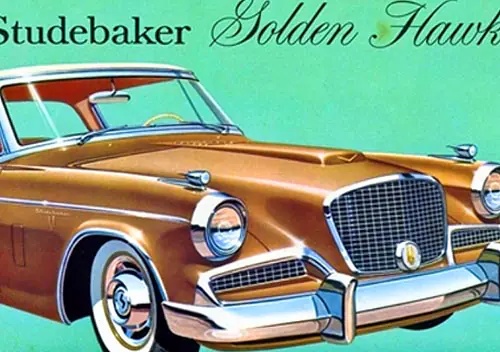
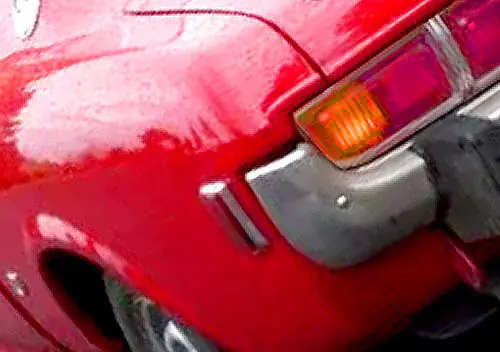
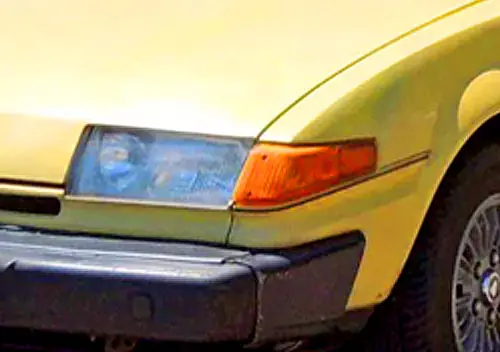
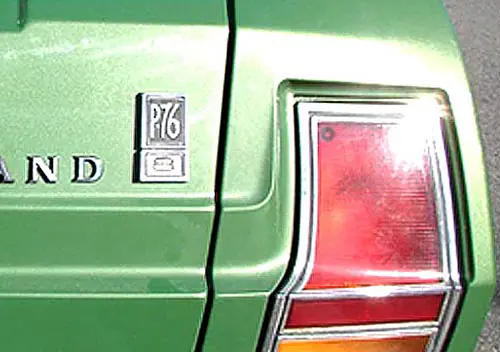
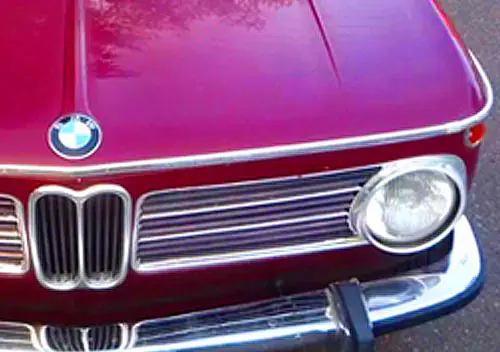
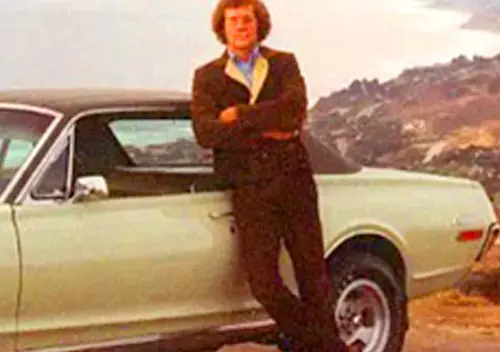

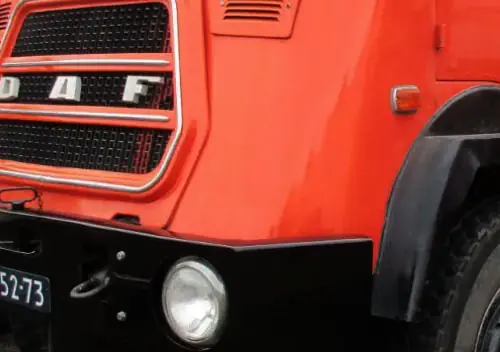
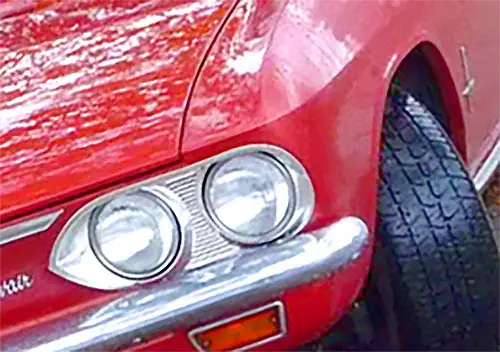
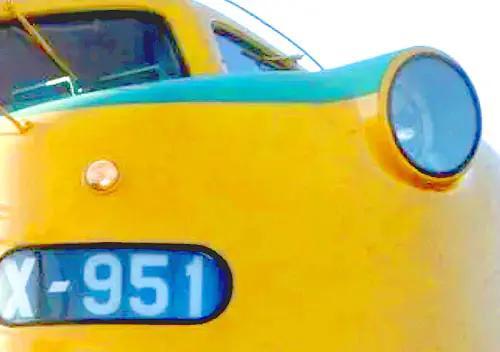
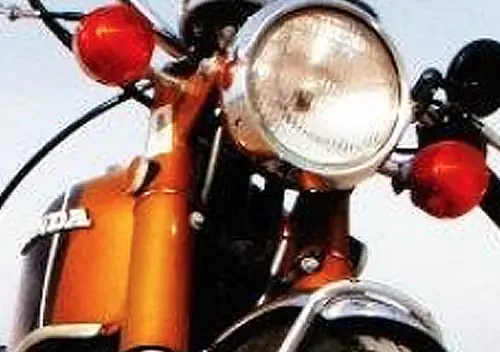
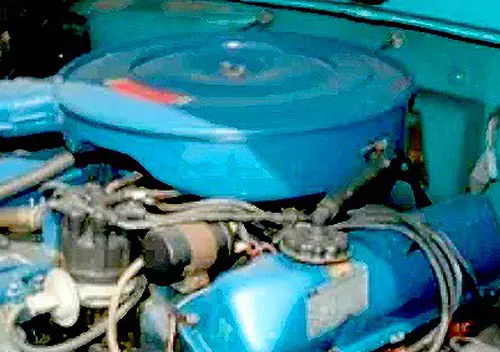

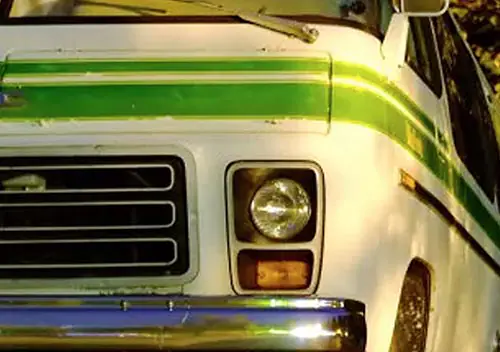

I recall reading when this came out that Chrysler was actually expected to make money on the car. After CAFE, American small cars were pretty much used as loss leaders to allow the sale of the bigger, higher margin stuff. But the Neon was supposedly designed such that Chrysler could make money on it by things like a single version for both Plymouth and Dodge, and even the doors with frameless glass which allowed many more pieces to hang on a rack on the production line. I do not know if the car was actually profitable or not.
There are many who say that Chrysler’s biggest quality problem during this era was Robert Eaton, who took over in 1993 after Iacocca retired. Recall that Eaton had been a GM lifer recruited by Iacocca, whose biggest criteria for a replacement seemed to be that it was not Bob Lutz.
Some interviews at Allpar indicate that Eaton began some big-time cost cutting after his arrival, and that the Neon head gasket was one of the things. Many Mopar partisans lay a lot of the 90s quality issues on Eaton’s stewardship, as he relentlessly squeezed costs out of product all up and down the line, even during a period of record profitability.
Except that Bob Lutz was president of Chrysler while Eaton was chairman of the board. Bob Lutz really ran Chrysler when Iococca was the front-man. And I believe Lutz continued to run the company after Eaton came. Of course, Eaton was the top guy but he wasn’t the chief operating officer. Eaton was mostly interested in a big payday – the so-called merger of equals with Diamler.
At the time of the merger in ’98, the SEC filing said Eaton would get a payday worth $70 million at the time.
There are multiple interviews on Allpar of former Chrysler engineering and vehicle development guys. They are virtually unanimous in their account that Lutz, whatever his failings, was very good at building teams and creating a place where people could excel. Lutz had eliminated many of the bureaucratic fiefdoms that usually exist in big companies, and was instrumental in making Chrysler the lowest cost producer in the industry.
These sources are also uniform that shortly after Eaton’s arrival, Lutz tried to be a team player but was increasingly marginalized. Key people became demoralized and left, and Eaton’s management generated a return to a more balkanized and political environment.
Most of these sources initially preferred working with the Germans than under Eaton. Unfortunately, the Daimler thing brought a whole new series of problems that accelerated after Zetsche left.
In sum, Eaton’s one qualification seemed to be that he did not threaten Iacocca’s leadership as Lutz would have. My conclusion from what I have read is that Eaton was a bigger disaster than most realize, and it was he that set the stage for the Daimler merger that everyone by now KNOWS was a complete disaster.
I still have my 1995 Dodge Neon Highline that I purchased brand new at Jay Dodge in Island Park NY in July 1994. My Neon was “an eye-opener” every where I went! I was the first one in my area with one and everyone stopped to see it. My brother who is a mechanic (over 30 years experience) was impressed with the engine when I brought it over to show it off to him at his service station. The other mechanics were also impressed.
** I STILL LOVE MY NEON JUST AS MUCH AS WHEN I BOUGHT IT **
(see image attached)
Here’s my FaceBook album
https://www.facebook.com/jett.starr.5/media_set?set=a.10201312721481584.1279243663&type=3
MY NEON SCALE MODELS
*I still have them too 😀 I bought them at the same time I bought my Neon.
http://dodgeneon.webs.com/NeonScaleModels.html
.. I also meant to ad. The hub caps are all originals
COOL! and you still have it 8 years later!
The problem is that quality control never was very good well before this guy took over in 1993. All he did was make the issues worse.
Nice writeup. Sadly, the Neon was indeed a bit of a flash in the pan. Never liked the awkward greenhouse of the coupe much, and didn’t really stand up to the Japanese cars in the same class, but was far superior in driveability than the miserable Cavaliers and Escorts being flogged by its domestic competitors at the time. Whenever I needed to rent an inexpensive car, I’d go out of my way to get a Neon.
On the other hand, maybe my friend Ed said it best. I drove up in the white one shown below (published to the Cohort a while back) to pick him up for lunch one day; he took one look at it and said, “Dude, insufficiently macho.”
I remember test driving one of the second generation Neons. I was none too impressed. I had a 1997 Cirrus with the 2.5L V6 and for some reason thought the 2.0 in the lighter Neon would be faster with better fuel economy. No chance. I passed on that one after a 5 minute test drive.
The 2nd gen car was sold in Canada as the Chrysler Neon when Daimler decided that Canada didn’t need Dodge anymore. That changed in 2003 when it was re-branded the Dodge SX 2.0. Maybe they renamed it to try and hide the mechanical issues. It didn’t fool anyone.
I’m pretty sure the Neon, along with most cars (not trucks) after 1994 had to have dual air bags. I can’t think of one car from ’95 onward without them.
I remember being impressed at the time (5th grade) that these cars had more horsepower than an Accord LX. As I got a little older, I read about the impressive handling-surely Renault’s influence? The cars had ample travel and pliable suspensions with great balance. Civics seemed limp and crashy in comparison.
They also seemed to be of much higher quality from the most cursory of glances. Even in fifth grade, I could tell these cars were not of comparable quality. Today, I could probably cite the larger panel gaps, agricultural engine sound, casting flash in the interior, but at that young age, it was a gut feeling.
But in the Neon’s case, it’s something I’m willing to overlook. Chrysler gave the American public a car with a sophisticated chassis, which they didn’t assume we were too dumb to enjoy. If I could find a Neon in good shape and protect myself from people’s judgment, I’d certainly consider buying it and putting the required effort into keeping it alive.
The XJ Cherokee, and Corsica/Beretta had only driver air bags until 1996. The XJ redesign brought dual airbags, and the Corsica/Beretta were replaced by the 97 Malibu.
Wow, these bring back memories:
I really liked them when they came out. I checked one out at a dealer – a four-door. I looked at the huge back door glass and wondered: Power windows in front, crank glass in back – I was suspicious. I rolled one down – er – a FOURTH of the way down…once away from the gaskets, they also flapped a lot. I was somewhat skeptical, although the car looked fresh.
My oldest brother-in-law bought one – the ubiqitous dark green used during those years – a coupe. I liked it as it seemed to run well. He kept it for several years.
When I started a new job in 1996, I had to go to Atlanta on a business trip. At the Hertz counter, they were low on cars that day and they offered me – are you ready? – a Jaguar! Now…are you ready for this? I turned it down and asked for something else…what did I get? You guessed it – a white Neon!
Every once in a while, I find one of my legs still kicking my own behind for some reason…
My friend in the STL area still drives a 1997 Neon R/T – he’s on his junkyard-bought second engine, but that thing still runs well.
Why did you turn the Jaguar down?
Either because I was afraid of driving a Jag in an unfamiliar area, or wanted to drive a Neon because I was still a solid Chrysler guy at the time, or I was just plain stupid – which is the most logical answer… – ouch! – leg, stop kicking me!
We can blame Daimler for a lot of things, but not these little vending-machine toys, nor their almost as hollow big brothers. I get that Eaton was a bean-counter, but I honestly wonder if it mattered who was in charge.
The whole company seemed spread too thin to keep up with the rest of the industry across all its product categories. Forget about design and performance – I’m talking about QC of supply chains and assembly lines. I can’t imagine that any Camcord owners had the problems I had with my Intrepid – all before 70,000 miles, and everything I had fixed broke again. No fun for a loyal fanboy/customer to be made to feel like a sucker.
Higher-margin Jeeps, minivans and pickups seemed to fare better. Maybe trying to make money on the low end in 1994 wasn’t a realistic goal?
I bought a 1993 Chrysler LeBaron-Highline Coupe-Bright White with Maroon interior..black/red pin stripes-beautiful car for the first year. By the end of year two at 36k miles I had to have the tranmission, power windows, and stereo replaced..and that was before the Chrysler/Mit Motors V6 started acting up. It was the first and last Mopar I owned.
Thanks for the post, Tom, I didn’t even realize before that a coupe version of the Neon ever existed. There are still some Neon 4drs around though, mostly euro-spec Chrysler Neons. Substandard as they were compared to contemporary Euro/Jap cars, they offered very good price/equipment, as well as a distinct, if somewhat funny, look – lots of them have been imported from EU and US in late 1990s – early 2000s. Since then, rust and wear have taken away most of them from this world, however.
I’ve owned 2 ACR Neons. Has to be the most fun per dollar car ever. I had zero quality issues with them. The only issue I had was that on car built on Feb 14 1998, which I believe was the change date for door handles for ACR Neons from unpainted to painted received both kinds of door handles. A painted one on the drivers side and an unpainted one on the passenger side. Since the car was black it took me a couple of months to see it. Perhaps that ACR is the one in the middle of the assemble line shift. Amazing car to drive. I used to wind the car out on a hill by my house, the engine intake note reminds me of a pair of Weber carbs. It did need a better tailpipe sound though.
“Perhaps that ACR is the one in the middle of the assemble line shift.”
Either that or it was built after the guys smoked a couple of fatties on lunch..
Haha, that’s funny. I could see it happening, I work in a factory, and the guys smoke it up all the time.
That cars condition is a pity. Hopefully the owner is planning a little work for it.
These are pretty rare cars and are coveted in the Neon community too. They only built about 1600 NYG Neons all in. That’s why you probably didn’t see one right away back then.
I can say no wrong about Neon. My mom bought a 1996 Neon Expresso that served faithfully to last year when it was traded in at 188k for a larger car due to health issues. The head gasket held together all the way to the end. Though Dad is the Oil change at 2500 miles and Coolant flush at 30k “I don’t care what the manual says” kind of guy.
I’m really hoping Dart takes off for Dodge. If there was ever a chance for them to make ammends for killing Neon in favor of Caliber the
Neon IIDart is it.They were so close with the Neon, so close. This was a car that was almost great. Had they just thrown in a little higher quality, this car could’ve become an American icon with succeeding generations still being built today.
Replacing this car with the PT Cruiser was a mistake; this car should’ve been revamped and sold alongside it.
All I remember is, once upon a time everybody and his brother wanted one of these….
The PT and Gen II Neon were sold side by side, just not at the same Dealership. Plymouth was the one that got cancelled so PT went to Chrysler and Neon stayed with Dodge.
Yes, the early 90s were an exciting time for Chrysler. In early ’94 when the Neon came out, I was in the process of moving from Harrisonburg, VA to Kingman, AZ and saw a Neon for the first time on a turntable in the mall in Harrisonburg. “What a cute little car” I thought, maybe a little too cutesy, but it fit the theme well of the LH cab forward look and it didn’t have that boxy truncated look of the K-car derivitives that I was sick of seeing by then.
Fast forward to late summer 2005. The Dodge dealer in Farmington, NM is practically giving away the last of the outgoing Neons before the Caliber replaced it. My wife and I were shopping for a small second car then, and we almost bought one – almost. In the end we bought a Corolla, the car that everyone loves to hate. In 7 years of ownership, not a single solitary problem.
I hate to say it, but What a smart move. I’m glad it paid off, reliability is it’s own reward.
The SCCA also had a one-marque class for the Neon. The only way you could purchase a Neon with the go-fast racing parts was to get sponsorship from a Dodge dealer. The field was huge at the annual SCCA Runoffs.
Neons are now actually highly sought after for amateur endurance racing. Evidently they hold up quite well to long periods of high speed driving. Much better than Mustangs GTs and Supras.
Who’d of thunk it? Chrysler did a lot of things right with that car, but in the end the bean counters won.
In late January ’96, I had one as a rental car in Orlando FL. It was a 96, with less than 300 mi on the odo when I got the keys. Drove it like I stole it, and really kinda liked it.
The Neon saga illustrates why one could argue that Chrysler overextended itself in the 1990s. The company’s leadership seemed desperate to distance itself from the K-Car frugality of the 1980s — they wanted to prove that Chrysler was back! Well, the styling did capture people’s attention. But like the late-50s, quality issues ultimately did them in.
I’ve wondered if Chrysler might have done better if had been less ambitious. If it had concentrated on a smaller line up of better-quality vehicles. For example, if it had updated its K-Car strategy, where at one point virtually the entire passenger-car line was based upon one modular platform.
Wasn’t going to happen. Lutz and company were too wedded to running Chrysler like a direct competitor to Ford rather than acknowledging that they couldn’t really afford to do that any more.
I don’t know if you can blame this all on Lutz. Iacocca never put much emphasis on REAL quality during his tenure at Chrysler, and he was always obsessed with not only Ford, but GM, even after it was apparent that Toyota was setting the pace for mass-market manufacturers in the United States.
I agree that Chrysler would have been better off rationalizing its passenger car offerings to one or maybe two platforms.
In retrospect, a small CUV based on a higher quality Neon platform would have been a winner. It would have also helped amortize the costs of the platform.
These Dodge/Plymouth Neons existed during the same time when the identical sized and similar designed but otherwise different Mitsubishi Mirage based Dodge Colt and Eagle Summit 4 Door Subcompacts were made by Diamond Star Models during the early to mid-1990s. The Dodge/Plymouth Neons however being American Cars had their roots traced back to the Dodge Omni/Plymouth Horizon and Dodge Shadow/Plymouth Sundance. When the Dodge Neon were discontinued after the end of the 2005 Model Year, they were succeeded by the Dodge Caliber and now the Fiat based Dodge Dart for 2013. Speaking of Dodge Neon’s rich history if it ever had one.
” How could they have fallen so far, so fast? Oh, that’s right: Daimler. But I digress…”
As a former Chrysler employee, I respectfully disagree. All the Mopar stuff of the early 1990s was, in the words of the immortal Frank Zappa, “A little bit cheesy but it’s nicely displayed.” The cars, including the LH, Clouds and the Neon, looked good, drove well when new but were absolute engineering crap. Everything to cheapen them out was done so that none of them lasted more that 100,000 km without major issues and most long before that.
Chrysler made loads of money in that era but, again typical for that time, there was zippola in long term vision. It was all about short term profits NOW and not what was down the road. This is why the sold out to Daimler. All the execs made loads of money on the deal and the shareholders did very nicely, too. When Daimler took over Chrysler, they got a demoralized shell of a company. All of their products were substandard and then the Germans really didn’t do anything to fix things. The only exception was the LX cars, which are not that bad and a good indicator of what Daimler-Chrysler could have done if the will was there.
While I worked at Daimler-Chrysler, we all wondered why it too so long to integrate the to companies, which was never actually completed. In fact, when the owners of my store saw the Caliber, they were so disgusted they closed the doors forever.
Daimler doesn’t integrate, it assimilates. Just look at Freightliner or Detroit Diesel. Also, Daimler had zero expertise in building efficient economy cars. The
salemerger was one of the stupidest moves perpetrated by Mopar mgmt. I have no idea what Daimler intended to get out of it, but they sort of expected a ready-made economy car presence (minivans, pickup trucks, Jeep) at a time when the German govt. was pushing for economy cars (to boost VW, no doubt).It was a great deal for the Mopar management. They walked away with huge bonuses and their stock options made them (even more) wealthy.
Having worked in the company, I would say the Chrysler people had the upper hand, which led Daimler to simply throw their hands up and walk away.
It was actually, when you think about it, the BEST deal the owners of Chrysler could have gotten.
Blasphemy? Maybe. But look…quite aside from their own interests, Eaton and Lutz had a ficundary duty to maximize shareholder value. Chrysler was on a roll, true; but accounts coming to light years later show that it was probably a ticking time bomb, ready to vaporize in the next cyclical industry downturn. There apparently were a lot of angry owners of Ultradrive minivans and leaking-head Neons.
Allowing Daimler to come in, was one way of at least mitigating what was coming. Daimler…I don’t know what the deal was for Chrysler owners, but surely Daimler stock was, in the first year or so, much more saleable than would be Chrysler in one of its down cycles.
The true loser in this was Daimler; and Schrempp in particular. The Daimler people had no experience in mass-market automobiles; no interest in learning and no ability to appropriately delegate management of their quite-different new subsidiary. They tried to design Chryslers as they did Mercedes….attention to trivialities and disregard for whole packages or price. The bright (and not-so-bright) Chrysler engineers were turned off; morale was destroyed; product lacked inspiration or direction; and Chrysler was in a death spiral. And Daimler shares ROSE as a result of their jettisoning Chrysler for a fraction of what they paid for it.
The shareholders who got bought out, who sold their Daimler stock if that’s what they got in exchange, doubtless came out ahead of either where they would have been or where long-term Daimler-Benz investors wound up.
Forget not that for the first couple of years, Daimler was bleeding red ink and it was revenue being thrown off by Chrysler that kept the bills paid (much like Chrysler is doing for Fiat now.)
Eaton had been petrified that Chrysler could not survive a brutal world market, and Daimler had the same concern, feeling that there was a need to link up with a volume producer. Part of the benefit to Daimler was the belief that some Daimler technology could be amortized over many more units, and indeed a lot of Daimler pieces went into Chrysler vehicles. Sometimes that was a good thing, and other times, it wound up raising costs for Chrysler and making it more difficult for Chrysler to make money on some of those JV cars.
There is a lot of sharing amongst the Truck Group (Freight-shaker, Western Star, Thomas Built, Detroit Diesel and the now Defunct Sterling) If you sit in a mid 2000s Freightliner Century or Columbia or Sterling the common parts bin is obvious.
Still, that’s nothing new- Freightliner and Western Star were all owned by White Motors for many years- the Diamond Reo, Freightliner, WS, and of course White trucks were all more or less the same truck with a different hood. The White Road Boss I drove for six years was pretty much the same exact thing as the Western Star I’d driven before that.
Canucknucklehead, will respectfully disagree with you on a couple of points. From all I’ve read, Chrysler spent a whole lot of time and money on R&D on the cloud cars in an attempt to better compete with Honda and Toyota. They were fully cognizant in the early 1990s that their real competitors weren’t GM and Ford, but the well-regarded Japanese brands. I’m afraid you’re being overly and inaccurately harsh in your criticism in saying they were “absolute engineering crap.” In many ways, both the Neons and cloud cars have a pretty good, though less than perfect, record. My 2.0L, 5-speed 1999 Stratus sedan is rather like a larger Neon with more room, great handling and truly inpressive fuel economy. I definitely wasn’t hypermiling in the days when I got consistent 38, 39, and 40 mpgs. Even at 200K miles, my overall average mpg for all miles on the car is above 36! The first and only time the car has broken down and stranded me was in the past 6 weeks when the alternator went out. Of all places to happen, it coasted into the Chrysler, Dodge, Jeep and Ram dealer. Oh, and at 14 y.o. and 200K miles, it still has the original stainless steel muffler and exhaust. I’ll tell you what, this car is so good that I intend to drive it at least 8 more years when it will be up to 300K miles. I know you may say my experience is merely anecdotal and not representative of the model. Yet, I spoke to a guy in 2004 with a 1997 model with the 2.4L/auto who was at 240K miles who like me, had spent little to nothing in repairs and was quite pleased with his car.
Tom, you’re right, I never noticed before how Peugeot-like they are.
There are simply NONE left around here. I think I’m more likely to spot a Dodge Shadow.
A law-school classmate bought one of the first Neons in the area. She initially liked it, but I remember her complaining about serious water leaks around the passenger-side front door (shades of the 1957 Plymouth!). My sister-in-law had one before she married my brother in 2000. She was still wrangling with Chrysler over the cost of the head-gasket replacement in 2000. Now she and my brother drive a Honda Accord and a Toyota Yaris.
I liked the coupes and that bright green color. If I recall correctly, the bright colors were specifically chosen to recall the High Impact colors that Chrysler offered in 1970 and 1971. They certainly stood out at the time.
Interestingly, the Neon show car featured the round headlights, but more conventional headlights were initially planned for the production car. Iacocca, however, insisted that the production car retain the round headlights, as he believed that they gave the car distinction and helped set it apart from competitors. He was right on that one.
The Neon was very distinctive and had promise, if only Chrysler had taken the time to work out the bugs of the first generation and capitalize on what was right. Unfortunately, Chrysler dumped the neat coupe for the second-generation Neon and basically “dumbed down” the entire car.
Another opportunity lost…
Water leaks were a problem in all Neons, the windows and especially the trunk. It also came in the cowl. Water leaks were a problem in most Chrysler vehicles of the era. Water leaks are the first sign of poor engineering.
The head gasket is another way they’re like Peugeots. My 504’s head gasket blew at around 40K miles.
By the time these cars came along, I was blissfully happy as a BMW fanatic. Still, I read all the reviews and was excited by what was being claimed for the Neon. Even having been burned by Mopar, the idea of the maker of my first two cars coming back and building something with the potential to be a modern Valiant seemed appealing. I remember that Toyota was so threatened that they issued a press release detailing all the ways that the Neon wouldn’t have measured up to their own standards for a 2 liter production sedan. Most of it rang hollow, since the car they were advertising for ten grand at the time was the 1.5 liter Tercel, not even the comparable but lesser of specification Corolla. Well, it turned out that the Neon really wasn’t a quality car that made a smart alternative to a Toyota for typical commuters. It was a much more exciting new contender in 1995 than the Dart is right now. When they start breaking the circle will be complete.
I was riding in a friend’s Integra when he hit a tree while flying through the air in the summer of 1995. We looked at a number of cars as possible replacements, and the Neon was one of them. The other one I remember was the equally disappointing Ford Contour. For all the handling competence of the ACRs, the Neon 5-speed coupe we tested didn’t seem powerful or taut. it leaned like a dinghy in a squall, although perhaps we set the bar wrong by driving around in my Turner Motorsport suspended BMW to do our car shopping. The dealer wanted big bucks at the time, even for a used Neon sedan with 100,000 miles a few months after introduction. I worked for that dealer in 1989 and we often had Chrysler’s own fleet vehicles on our used car lot. I wonder if the used Neon they were trying to get new MSRP for was a development mule?
Did you mean 10,000 instead of 100,000 miles?
Nope. They had a few month old car with 100,000 miles. IIRC, it was 103,000 miles. It looked pretty used up too, but they wanted more than $10K for it.
I was never tempted to buy a Neon, having been burned owning a 1981 Omni, but the one thing I always have noticed about Neon drivers is that they are very aggressive. Even today if I see one on the road it is usually passing everything in site. I have never seen a Neon driven slowly or cautiously. I guess it must be because they can be driven aggressively and the owners want to prove it. Or perhaps there is a certain psychology to people who buy Neons that they are all always in a hurry?
Around here it’s Cavaliers. A recklessly driven car is most likely to be a bone stock 4 door Cavalier with a giant strut mounted wing on the trunk lid..
Why the reckless Neon drivers?
My guess is, low resale value. Habitually reckless drivers tend, not to put too fine a point on it, to not be the brightest bulbs in the chandelier. And dumb people do dumb things, and hold the jobs dumb people hold…with smaller checks and less money for cars.
And less discretion in what KIND of cars they buy. So they buy a car that, at the end of its lifespan, is going to be a can of troubles…and they drive it like Joey Chitwood. And put a fart-can muffler on it…most of the Neons I’ve seen of late have had that.
Dumb, dumber…Neon. Were it a solid, long-lived platform, the prices would be holding better…and the McDonalds morons would have to find other cars to buy from Honest Harry’s Emporium.
I live in Ontario, Rail Road Labour (Far from a shit pay job), and I still drive my little neon. It’s a 1995 Sedan, and it honestly is a fun car to drive. I paid $1000 for it 2 years ago, pounded 70,000KMS, and have put 35 dollars into it (a coil pack). The car is un killable, with 245,000KMS (147,000 Miles). It was a great first vehicle, and still makes an amazing second vehicle (Have a 2006 Suburban). You honestly can’t judge a man by the car he drives mate, some people just don’t need a glossy paint job to have fun. I think that the guys who drive around in there Camaro’s, and there BMW’s are just Modern day Geno’s.
Well, I had one of the very first Neons, Sport 4-door. The problems? Head gasket, master brake cylinder loosing vacuum, front windows scratched by something inside the doors, water leaked around taillights, broken spring in the clutch (drove from Cleveland, OH to NYC like that and got better then 40 MPG!), ECU showing fault code for no reason, musty smell from A/C heat exchanger, wobbling frameless window glass… But I still kind of liked it. It drove like go kart with doors. As to aggressive driving, if you had a 5-speed manual, which I did, you could not drive it other way: the first gear was too tall to begin with and the engine did not want to drop RPM when upshifting (I was told that was done to reduce emissions). As to the 3-speed transmissions, Chrysler decided that 3 was good enough (and mechanically it was true, but from marketing perspective-a disaster). That 2.0 L engine thou was pretty good engineering exercise, designed to be turbocharged… But yes, been counters had won. Again.
.. I also meant to add. The hub caps are all originals
I have had the misfortune to have rented three Neons of different years and each time felt like the cars were urging me to beat the crap out of them.
“Chrysler seemed primed for decades of success during the 1992-95 period. How could they have fallen so far, so fast? Oh, that’s right: Daimler. But I digress…”
The bad head gaskets in early Neons and other cost cutting hurt them worst of all. Many who took a chance on a Neon after owning a Japanese car and had gasket failure said “No more US cars!”. Cool looks only go so far.
Even here in Chicago area [near Belvedere plant] they are less and less common, I saw a 2nd gen all beater’ed up today and was ‘Oh haven’t seen one in a while’. They are getting scrapped faster than old Cavaliers.
Chrysler had great designs in the mid ’90s. Unfortunately, owners paid a dear price for being tempted by them. Had LHs, Neons, and Cirruses been built to Honda or Toyota standards, Chrysler would have changed the auto market. No doubt the domestics of today will turn into pumpkins in the same manner.
I didn’t think they were that bad. In fact in 1995 my friend’s Mom who was recently widowed was looking to ditch her LTD for a new smaller car. She was looking at an Acclaim, and I said No, No, don’t get that, get a Neon. She objected because it was only a 4 cylinder, and the Acclaim was a V6. I told my friend to take her for a test drive, and really twist it so she could see it wasn’t slow.
She bought the Neon and was quite happy with it. I think her only complaint was the lack of a trunk interior light.
The Neon may not have been a class leader, but it least it was a viable small car, which DCX DIDNT have in their product line once they’d killed it off.
That being said Neons continue to surprise me with the new and imaginative ways they can rust. I saw one on the road the other week where the door skin was disappearing from the top down, and you could see the window mechanism inside.
I wasn’t that old when these cars came out, but I do remember seeing them in the showroom when my parents bought their Jeep and thinking they were pretty cool. The head gasket issue was fixed by the 98 model year, but by then the damage was done and the car had a bad reputation for reliability. I now own a 99 Coupe, and as somebody above mentioned they were not aware of a 2 door, I have heard that from a few people who have seen my car. My car has been very reliable for me, and the community of people modifying and racing these cars is still very large with lots of parts available still. Having owned a number of Honda’s in the past, even older ones, the interior of this car is it’s biggest letdown. It’s just plain cheap and doesn’t fit that well. There are odd gaps and cheap plastics that aren’t too durable. One of the more annoying ones is an odd gap around the ignition, getting into the car in the dark sometimes you will stick your key into that gap rather than the ignition. I attached a picture of my Neon here.
These were sold in Australia, marking Chrysler’s return after an absence of 15 years. They were badged as Chrysler Neons, but weren’t all that popular. A guy I worked with bought one, bur the main thing I remember about them was that they were the last car sold in this country with a 3 speed automatic transmission. I still occasionally see them, but the sightings are few and far between.
Along with the head gasket issue and using manual rear windows when the fronts got power, the old 3-speed automatic (when everyone else was going to 4-speed autos) was a major detriment, and went a long way to a steady sales decline after initial good numbers. It’s a shame because the Neon was a solid alternative (at least in appearance) to the other offerings of the time.
OTOH, considering how badly Chrysler bungled their 4-speed automatic in other vehicles, maybe it was just as well the lowly Neon just got a 3-speed.
Correction: The Neon Sport was not introduced as a coupe model two years after its introduction. A Sport sedan was available at launch. I oughta know – I was one of the first suckers to get one. It came with the same 132hp 2.0 four as the Base and Highline models. When the couple was introduced, with its Teenage Mutant Ninja Turtle roofline, that was when the 150hp version of the four was offered.
Regardless, the Neon was a lemon of the most sour order. Handled like a go-cart, but rode like one too. The Sport seats were nice, but the IP, console, door panels and dashboard were covered with cheap-assed, hard plastic. My buddy’s Elantra was better put together. Electrical problems. HVAC issues, bad brakes. I swore I’d never buy another Chrysler again. The Neon got towed away shortly after I paid it off, crippled by a shitty alternator and leaking head gaskets. The city sent me tickets demanding I pay, but I said good riddance! I’ll deal with that when I get another car – IF I get one. F**K Chrysler. I hope the next time they are at death’s door that they open it and go through.
I loved these cars when they were first introduced. To me they were the American answer to the Honda Civic. LIght, zippy and handled well. I used to rent these cars specifically when I traveled because I liked the way they drove. When I was a young father (and mostly broke) I really wanted a Nitro Green ACR Coupe in the worst way, but circumstances never allowed it.
10 years later when I was searching for a commuter car for myself, all of the DOHC Neons had disappeared, (I’m guessing due to) a combination of the head gasket issues and rust here in the upper midwest. I found a few, but none were suitable. I ended up buying their direct domestic competition, a Chevy Cavalier (and later a Pontiac Sunfire GT).
The J-bodies are like the opposite of the Neon, heavier steering, slower acceleration and not very tossable. The DOHC Neon Sports and ACRs were much quicker than most of the competition. OTOH, the J bodies have held up well mechanically and only now the rust is so bad that I’m looking for replacement cars.
But yes, I would have an ACR or even DOHC Neon Sport in my garage in heartbeat.
The water-based paint proved troublesome as well – it chipped easily. I actually got mine repainted a couple of times by the dealer.
I can’t believe it took someone that far down into the comments to mention the crappy paint jobs on these lemons. I was shocked when I started seeing all the paint falling off Neons in the late ’90s. Well… maybe “shocked” isn’t quite right. It was a Chrysler product, after all.
The paint, EricL, and in my case, the window moldings, HVAC and radio as well. The Neon was my baptism by fire regarding US-made cars.
Every one of these I saw in the mid 00s (the last time I saw any) featured peeling paint.
So many examples of small US cars that “could have been” market changers, but their makers didn’t give enough of a damn to make the cars both well-engineered and high quality — not to fatally cut-corners and penny-pinch them into mediocrity. They were lazily targeting the jingoists who would heavily favor a US-made car but couldn’t be bothered competing for everyone else.
I recall driving a new Neon SXT in 2004 (by which time the sportiness had been mostly watered down) and still being impressed by the quick, accurate steering and drum-tight structure.
The drivetrain felt agricultural by that time, and the interior plastics had that greasy ’90s-Chrysler sheen, but the car was cheap and pretty fun to drive, relatively speaking.
I bought a 1995 Sport Coupe. Black with a plain gray interior- none of that bright confetti look for me. Was the best car I ever drove- a list that includes several Mustangs, 6.6l Trans Am, and many other caars. Didn’t know when I bought it, but it was a rarity- had 4 wheel disc brakes- something that was basically on teh ACR only.
First real mechanical issue happened when the car was 6 year sold- broke a cam shaft- but then- it did have 198k on it. A crate engine solved that quickly- and ran like a charm until a teenager in a Silverado decided the light wasn’t red enough to stop for. After that the trunk was a few inches from the back seat.
Now looking for a Dart- hoping it can come close to matching the Neons satisfaction and onwership experience.
The 2001-2002 models were in my opinion the best year for the neons. My mother bought a 2000 in late 1999 and still has it today. The only issue is it needs a passenger door from careless drivers. That car is reliable and does whatever you tell it to. Sometimes I swear it thinks it has a V8.
Looks just like my old 2000 Dodge Neon. I’ve upgraded since, though.
Now I have a 2002 ES.
The 2002
Also someone I know told me that he read that the first generation Neons are so rare they may be worth a surprising amount someday.
Weird, because I happen to always see a Neon or two on a daily basis (I live in Michigan, but I would have thought that winter road salt would have ate all the 1st gen Neons up).
Why, just WHY did they eliminate the 2-door from the redesign?!?! It wouldn’t be as big a deal if they hadn’t brought out the SRT-4 version. A hot rod sedan is just…dumb. The SRT4 drivetrain has found its way into many coupes not just for looks but by nature theyre lighter, stiffer, and more nimble. I know for a fact that the turbo 2.4 was first designed for the PT Cruiser GT, and that stuffing it into the Neon was an afterthought just as a way to get more mileage out of the platform. And that’s really what a gussied up sedan is: A cheap easy way to try and push off a 4-door econonobox as a ‘tuner’ onto unsuspecting buyers who will bite at anything that promises more performance. The Cobalt SS coupe was a MUCH more dedicated attempt…and I hate Chevys!
I’ve been driving 1st generation neons for the last 4 1/2 years. Out of the seven neons that I’ve had in my posession, only ONE has suffered from the dreaded head gasket issue – a ’95 Sport Sedan. Another ’95 Sport Coupe was beginning to suffer from the paint issues in 2009 when I bought it. Touch-up paint took care of that.
Currently, I own two ’98 R/T coupes (one with nearly 400,000km’s – a working, driveable parts donor), and a ’96 ACR coupe.
While there are some interior fit & finish flaws, these cars never fail to put a smile on my face. I’ve put over 85,000 km’s on my ‘low’ km R/T, since I bought it in November 2011, and it’s never let me down. Lately, I’ve even been getting compliments on the car, something I haven’t experienced since I drove my ’68 Valiant, 10 years ago.
With the Neon, Chrysler *almost* hit the nail on the head, but in the process whacked their fingers too!
A pic of my ’98 R/T daily driver below.
I have a 95 nyg neon coupe. We just recently repainted it and it turned out great. I estimate at least four hundred thousand miles on the body. It was originally a dohc with a five speed. After three or four engines it is now an automatic sadly. This engine has around 30,000 miles on it. The seats were replaced with ones from a wrecked neon. All body panels except trunk lid were replaced. Gas tank and lines, brake lines, most suspension. Headlights and taillights. There is a leak in the trunk and in the well behind the drivers seat. If anyone knows the fix for this please let me know. Here is a pic
Another pic
Good looking cars…almost bought a dark green 4 door in the mid 90s…dealer didn’t want to give enough on the trade so we didn’t buy it. If I could find a stripped down 5 speed with nothing but a/c I might buy it as a commuter beater, but they seem to be few and far between in this part of the midwest. I guess disposable cars are disposed of quickly…
I don’t know if second gen are better than first gen neons (I’ve heard they are) but my first own car (before that the company I worked in always gave me a car so no need to have my own) was a 2004 neon (second gen) I bought in 2007.. I still have it and I have gotten almos zero issues except stupid stuff like the battery and the like , it works wonderfully and it is still fun to drive.. the stereo sounds awesome to me to be honest.. I don’t know if Daimler actually improved the quality of Chrysler cars but at least my Neon and a friend’s same era Stratus still work beautifully.
Actually sold as Chrysler Neon for a very short period here in Sweden. Extremly rare, must be at least ten years since I saw one. I remember that they made a big thing about the “cab forward” in the ads….
Wow! Neons were everywhere 10 years ago. I nearly bought one back in the 90s, specc’d it out online with the higher performance DOHC motor and manual, and all the other performance goodies, but the salesman didn’t want to order, kept pushing the ones on the lot at me. Now…I can’t remember the last time I saw one in traffic or even at a buy-here, pay-here. For the amount of sales, they vanished suspiciously soon.
Chrysler exported these Neons they turned out to be crap there are almost none left here, but they left the sporty version off the menu, probably because they knew it couldnt compete in the handling dept.It may vaguely resemble a Peugeot or Citroen to someone whos never seen those French cars but it sure would not corner like one pretty much nothing can keep pace with a well driven 306 or ZX on a twisty road.
Saw one just like this at the sonic near work recently
Huh, didn’t realize they had this color even!
My hubby, before I met him, had a 1995 Neon that he bought in 1995. He drove it for 10 trouble-free years, from what I understand.
What I can vouch for, though, is that he liked the 1995 enough to, in 2005, replace it with another Neon. Out of all the universe of cars available to him, and he was making pretty good money, and he picked the Neon again, that’s how much he loved the first one.
The second Neon-I drove that one quite a bit. Great car! With the automatic and 2.0 it was still good for 33 mpg on the freeway. The air con practically blew snow out of the dash. Never had a problem over the course of 140,000 miles. That car went back and forth from Chicago to Detroit and back literally every weekend for two years. It went on countless trips from Detroit to mid-state Illinois, 6 hours one-way.
And it was actually kinda fun to drive! It handled really really well. It had ok power, better than I expected and enough for normal driving. The interior wasn’t luxurious, but it was fine. Yes, the dash was hard plastic, and NO, I didn’t (and don’t) care-I mean seriously, how many people are sitting there feelin’ up the dash while they’re in the car anyway?
I dunno, I didn’t get much exposure to the first Neon. I still see ’em around here semi-regularly, though, so they can’t have been too bad to be surviving the salt-encrusted pothole-ridden hellscape of Detroit roads.
I still see Neons all the time here in Nebraska, even Plymouth ones. The coupes not so much though.
I think this area must be populated by hardcore Mopar fans because along with all the Neons, there are a ton of old Pacificas, Aspens, 1st gen Caravans and Town and Country minivans, all the LH cars and now LXs.
There’s one of these on Craigslist here in Vancouver right now. $1300.
http://vancouver.craigslist.ca/bnc/cto/5897963838.html
Personally, I never cared for the 1st gen, but did like, and buy a 2000 second gen.
I never liked the overly cute “Hi” ads during the Neon launch. I’ll chalk that up to marketing rather than the vehicle.
Over the years, I drove various rentals and service loaner 1st Gen Neons and two things always bugged me:
1.) I remember the back side of the steering column stalks being open and hollow. Not something a driver would typically see with their eyes, but the hollow channel on the backside would be felt by your fingers. Less plastic per piece = cost savings
2.) Horrible vision out the back window. Even with the driver’s seat at the highest position, forget seeing anything on the ground behind the rear bumper for at least 10 feet if not another full car length.
“…Hopefully, though, the new 2013 Dart will recapture a bit of that Neon ACR magic. Time will tell.”
Hmm, well I guess time did tell and in typical Chrysler fashion, they screwed it up again. The Dart landed with such a thud that it is now history, not even three years later, along with its larger spin-off the 200. This leaves Chrysler with exactly two nameplates: 300 and Pacifica and no small car. And again in typical Chrysler fashion, they bail on the small car market just as gas prices are set to rise again.
Hmm how history repeats itself. The Neon was a decent car ruined by poor quality control and cost cutting and not keeping up with the competition. I mean even a 1996 Cavalier was available with a 4 speed automatic (std on LS) and had ABS std across the board. The Dart and 200 are the same thing all over again maybe with a little better quality but failing miserably at gaining Chrysler momentum in both the compact and mid size field. Sounds like 3 easy deadly sins to me. But I’ll bet a months pay check that not one of those three will every show up as such here.
Which is a shame, as the Dodge Dart is a very nice, very underrated car. My wife has a ’15 GT which she absolutely adores, and in the first 18k is giving her perfect service.
Two things killed the Dart: 1. The very botched rollout. Yeah, I was excited about all those cars on the dealer’s lot with 5-speeds, but I don’t think many other potential customers were. 2. The car wasn’t named “Corolla” or “Civic”. Those two own the market, Cruze and Focus pick up what’s left, and God help whoever is coming in fifth.
Yep, and I actually thought the 2015+ 200 is a sharp smaller car. I’ve driven a few as rentals and liked them for what they are.
There are none of these left around here. But they didn’t sell well in truck country. My wife’s daughter had a 97 one for a few years before I met said wife. From what I gather, they hated it and were actually glad it got totalled.
Daimler messed up with the Neon in Europe too (it did initially sell well for what it was). Had they kept on top of the quality issues and managed to offer a diesel engine in it, they might have been able to do what Renault did with Dacia 12 years later, by creating an entry level range which they never had. A sensible person would have expected them to get it right with the second series but no.
In the last pic in the upper left corner there is a white Ford Ranger next to a couple of white Chevy Colorados. That reminds me of the fact I owned a white Ranger of that era and now own a white Colorado.
As for the Neon. I think that was the last car that was offered with such dynamic colors before the great Beige depression that fell on cars from 1997 till now
Second, and to date last new vehicle I bought was a 92 Ranger XLT Supercab with 3.0/5-speed in August 92. Sticker was $14,825. It too was white with blue interior. Other than it having a bit too tall of a first gear ( for me anyway), I liked it and it gave good service.
I have to add that my old buddy in Missouri still owns a 1997 white R/T coupe. Not bought new, though.
Nice write up. I just don’t see too many coupes on the street, but plenty of four door first generation models including one in the building parkade driven by a young female.
Second gen models I see on the streets are performance models slightly beat up and driven young, pimple-faced males.
Another fairly well designed and decent looking small car ruined by Chrysler garbage quality. My partner at my previous job had a 1995 green four door that he bought new. To say it was the single biggest pile of crap was an understatement. Literally everything that could go wrong did starting with the proverbial head gasket stranding him 3 miles from work! But not before that turd of an engine started leaking oil everywhere prompting the poor guy to carry a spare bottle wherever he went. Next was the bottom end which self distrusted in grand fashion in his driveway. Yup I had to pick him up and bring him to work then too. he used to joke and call me his taxi service. I just felt bad for him.
The 3 speed transaxle also failed a year later with about 70K miles and 5 years of age. The headlights were also so yellow as to be virtually useless. New capsules set him back a pretty penny at the time. The exterior paint was also garbage with the clear coat peeling off the hood, fenders and deck lid. The remote trunk failed. The hood cable broke twice. I could go on and on with the lump but prefer to forget about it. I’m sure Dan would too as he saved up enough money to finally dump that Neon and instead bought a 2001 Monte Carlo which he loved. Surprise he was never late for work again due to car issues and that Monte went well over 100K with but an intermediate steering shaft replacement to speak of going bad.
Neon – the most honestly badge engineered car ever? Or a sub-brand that was not quite a sub-brand?
I don’t think Chrysler’s slightly novel approach of switching out nameplates and small badges to put these in Dodge and Plymouth showrooms really hurt these car a lot. But, there was probably some real injury to branding in the long run. Even when Darts and Valiants were essentially the same car, the small differences in grills, lights, etc,, gave you at least a little variety, and something for the fanboys to get excited about..
It is a shame that these cars probably do represent the first slow down in Chrysler’s 1990’s momentum due to their quality. Everything I’ve read, including some of the informed comments above, seems to point to Robert Eaton as the source of the problem.
It’s been a long, long time since I’ve seen a first-gen Neon. Longer still a coupe. And a neon green one? Maybe never.
I also thought these quite the neat-looking little cars when they premiered. And, while now thoroughly 90’s retro, they still have an appeal. Though I think time will put them in the same flawed-but-cute box as things like the Gremlin and the Caravelle.
Some cars get an irreparable taint on them when you associate them with people you know had them, in my case it was my cousins and a 2 door Neon that found it’s way down the beater ladder with the four of them in their respective high school years. And knowing my cousins and seeing that car fall apart under their hard tenure with it I have reservations about getting anywhere near a Neon today.
I remember as a kid when they came out they were kind of novel with the round headlights and Hi. campaign, but even as a kid they had a penalty box vibe to them, which at ages that young I didn’t really even grasp model/class hierarchys yet, if that says anything. The 2 door always looked goofy, the roofline looks taller in the rear than the front, in addition to the body having a taper itself, which as a whole looks ridiculously cartoonish(and is amplified to 11 in lime freaking green!!!). As much as I love 2 door bodystyles the jellybean 90s compacts didn’t translate well at all, while I found the boxy Shadow and Sundance cool little wedgy coupes, but the only player in this class that made a good looking coupe was the Honda Civic, while the Neon and Escort ZX2 did nothing to make a case for future successes.
Oh man. I worked in the parts dept. as an inventory clerk in the late 90’s and my high school dream was to own my very own little Neon. Eventually I needed to replace my hand me down Chevy Citation and was able to snag a 98 Plymouth Neon Expresso in Platinum. Manual transmission. Loaded. I STILL LOVE THIS STUPID LITTLE CAR. Now it hangs about in my garage with it blue WI collectors plates on it. Needs a little body work these days but I bet it would clean up nicely. It’s little round headlights melt my heart still.
I saw one of these running around the other day in my neighbourhood. Sure catches the eye in comparison with today’s cars.
I allll-most bought a first gen Neon, but a relative had the competition’s car, and swayed our decision to the General. Not to worry, that car blew a head gasket too, at 30,000 miles.
Despite things like a 3-speed automatic, manual rear windows on the sedan when the fronts were power, and the head-gasket issue, the 1st generation Neon was okay. It was the last car under Iacocca, and I’ve read the round headlight styling was due entirely to him (and, in typical Iacocca fashion, the styling worked). In fact, the whole clever “Hi.” advertising campaign has Iacocca’s fingerprints all over it.
But then, along came Eaton and the Daimler merger, and it all just went to hell. I will say that one positive product Daimler did at Chrysler was the next generation 2008 minivan. Yeah, there were too small brake rotors that needed frequent replacement, but that got fixed in 2012. It was remarkably successful and lasted a long time. I might go so far as to say it was a modern version of the old, anvil-solid, slant-six, Torqueflite A-body Valiant, even to the extent that one of the few under-engineered parts of the Valiant were the brakes.
I took an early Neon for a test drive – nice car – in the glove box were decals to name the car either Dodge or Plymouth. Rolled window down on highway and could not get glass back into chanel – had to stop.
Chrysler had a real bad habit of using frameless door glass on cars where it wasn’t warranted, and one of the most notable examples was the 1979-81 R-body, i.e., St. Regis/Newport/Gran Fury. The stangest example was on the Chrysler New Yorker that had frameless front door glass but ‘partial’ frameless glass for the rear, with the back half being fixed pane.
In the late 90s my sister asked me for car buying advice. I said don’t buy a Dodge. So she gets a 95 Neon. Didn’t last long. She dumped it after either 2 gaskets and a transmission, or 2 transmissions and a head gasket, I forget.
So cute, so poorly made.
Tempting, but so sad.
I clearly remember them showing up at the Chicago Auto show. So cute, so friendly! These cars were like puppies you wanted to take home, then discovered that they were actually mutant, demon-possessed, coyote pups. No potty training worked on these cuties!
IIRC, when these cars were being discontinued there was a sudden surge in demand for them, with Chrysler even considering a production extension.
The Caliber even sold well at first. Another car that could have and should have been better.
I’ve read in many articles that these (used) were popular first time cars for kids with not a lot of money.